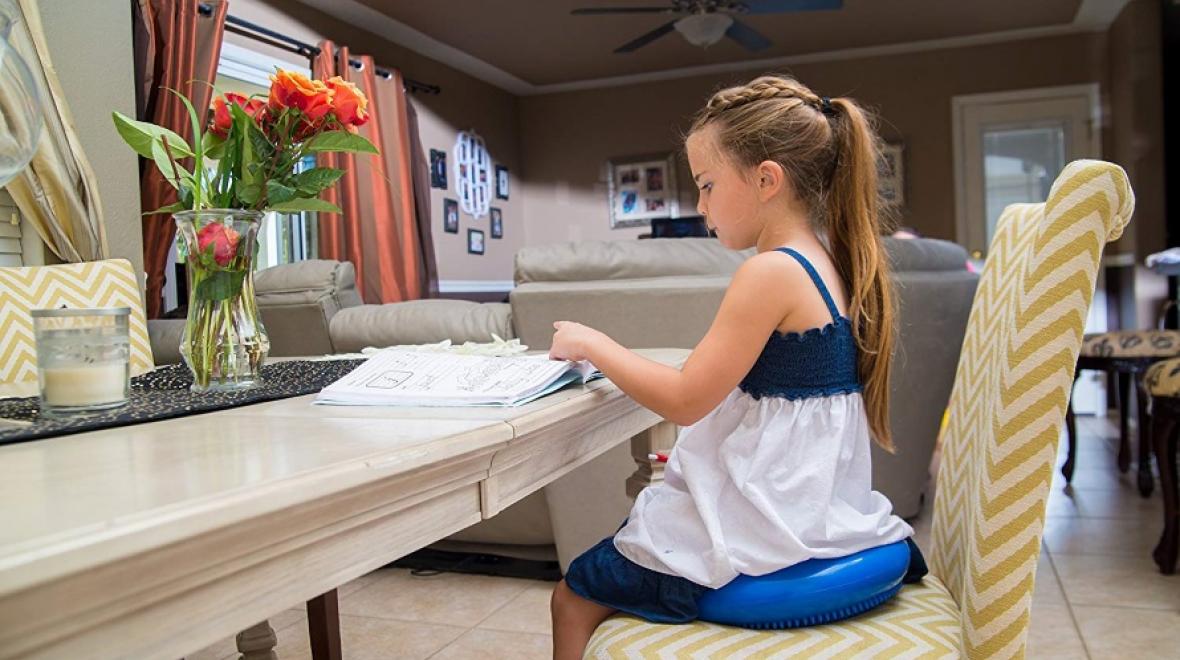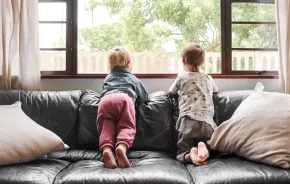How to Create Sensory-Friendly Spaces in Your Home

Photo:
Wiggle Seat photo by Sensory Solutions
Kitchen and living rooms
Kitchen or dining area
- Bright lighting can be overstimulating, so Selznick suggests switching out your overhead lights for soft-task lighting to create a more relaxing mealtime ambiance.
- Make child-friendly kitchen tools — such as spatulas and mixing bowls — readily available and invite your child to cook with you. Use a kitchen helper stool at the counter so kids can securely get hands-on while helping out. Create visual boundaries on the floor with washi tape near areas where kids shouldn’t go, such as around the stove.
- Evaluate your seating set-up. Selznick recommends putting kids in chairs that are contained (even if that’s just a basic kitchen chair with arms) and putting a step stool with grippers under their feet to reduce wiggling and squirming during meals.
Multidimensional spaces (living and family rooms and playrooms)
- Designate one area to be what Selznick calls a “cozy corner,” where your child with special needs can be near the family but still retreat to a quieter, more private space. Section it off with drapes or curtain panels, and add a cocoon seat like this one from Target’s sensory-friendly home décor line.
- Offer noise-canceling headphones or earmuffs and a bucket of fidgets for family movie nights. Many kids with special needs will find the typical television volume too loud and struggle to maintain their attention for the duration of a film. These small adaptations allow them to participate more comfortably in this or any family activity.
- Fill the room with alternative seating for kids who can’t stay in one place for very long. Selznick likes stadium seats, wiggle seats, bean bag chairs and plain-old floor pillows.











